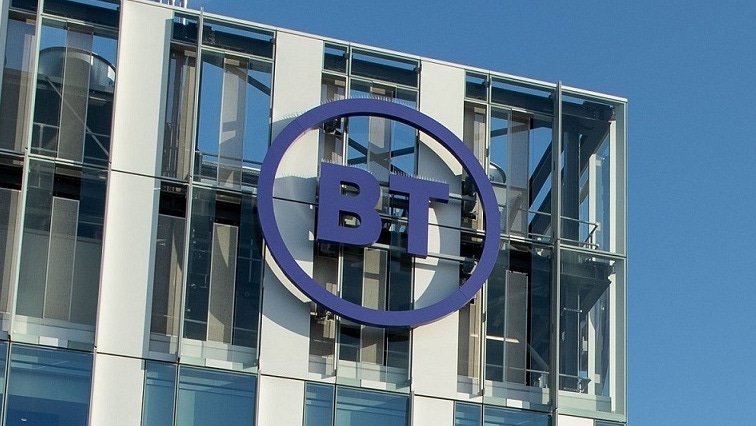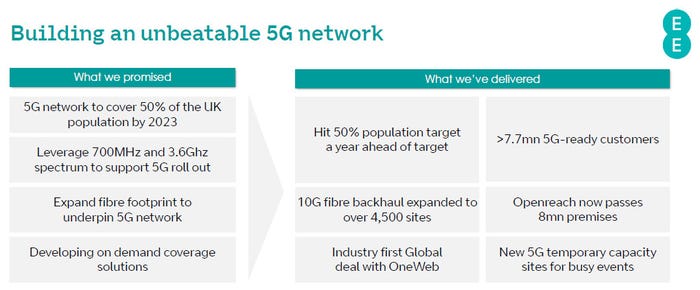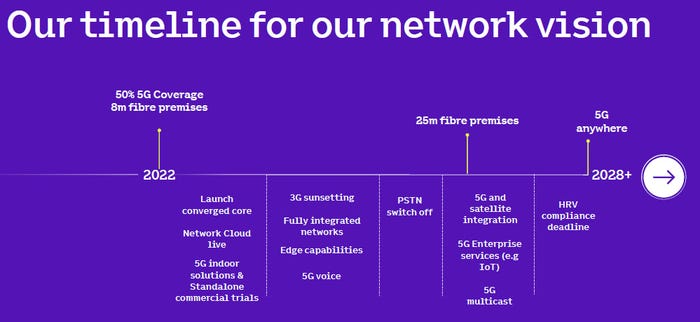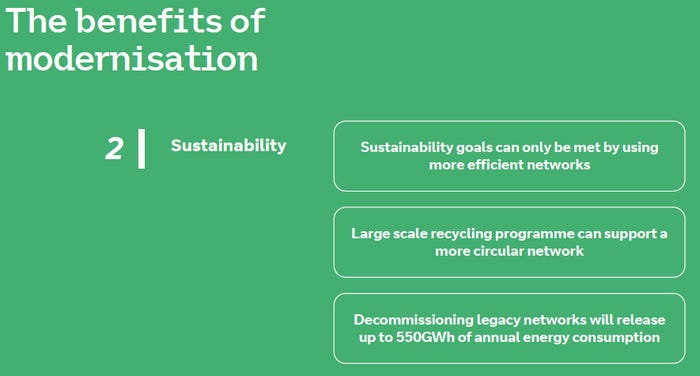UK telecoms group BT has offered an update on how things are progressing with its 5G network and where it’s headed.
September 6, 2022

UK telecoms group BT has offered an update on how things are progressing with its 5G network and where it’s headed.
Top BT techies CTO Howard Watson and Chief Architect Neil McRae hosted the cream of UK telecoms press and analysts in the boardroom at the company’s shiny new HQ in central London yesterday. The main purpose of the gathering was to give the two people in charge of BT’s mobile network the opportunity to share their vision for it, as well as a progress update.
Watson started by stating his grand network ambition of having 5G ‘anywhere’ by 2028 and a fully converged network by the middle of the decade. We questioned the use of ‘anywhere’ rather than ‘everywhere’ (especially since it’s half of the original meaning of EE) and Watson clarified that he’s aiming for 90% geographical coverage, with the remaining remote locations supported by other means such as fixed wireless access and LEO satellite coverage if needed.
The two slides below highlight some of the milestones the BT network has already reached followed by some more it’s aiming for over the next few years.


As you can see, a big part of BT’s network plans involve finally shutting down some old ones. Only a percent or two of network traffic takes place over 3G these days but it still accounts for around 30% of radio energy use, so finally shutting that down will create a bunch of efficiencies. The real biggie, however, is the legacy PSTN (public switched telephone network), which will save huge amounts of energy when it’s finally switched off, not least because that will enable the closure of thousands of exchanges.

As the former state telecoms monopoly it’s safe to assume BT has a lot more ancient kit to contend with than its competitors and modernisation is clearly a major priority. But closing down legacy services is always going to be a delicate and contentious business, so McRae detailed the four main benefits of doing so. In the current energy climate the sustainability angle should be an especially useful counter to any opposition BT faces over this transition.




The key to BT achieving this modernisation is the complete move to a standalone 5G core (provided by Ericsson). While far from straightforward, that will eventually provide all the improved performance you would expect as well as the agility and flexibility associated with cloud-native architecture. Watson and McRae seem clear on their ambitions for BT/EE’s 5G network but feat of technological and logistical juggling required to achieve them will be far from straightforward.
Get the latest news straight to your inbox. Register for the Telecoms.com newsletter here.
About the Author(s)
You May Also Like








.png?width=300&auto=webp&quality=80&disable=upscale)


_1.jpg?width=300&auto=webp&quality=80&disable=upscale)


.png?width=800&auto=webp&quality=80&disable=upscale)